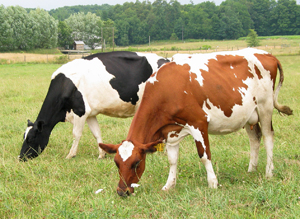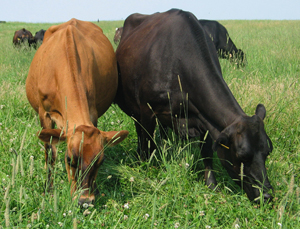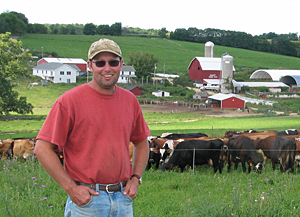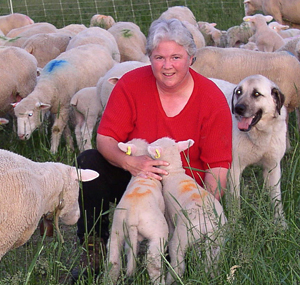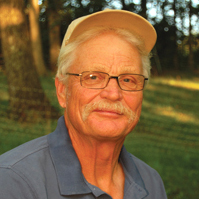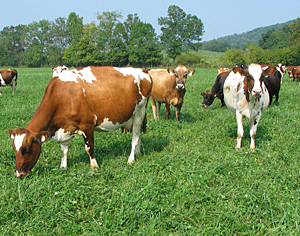Amos Nolt relies on top forages, barley baleage and chicken manure
Shiloh, Ohio — Try, if you will, to poke holes in this formula for an organic, grazing-based dairy in the eastern Corn Belt:
1. Feed the dairy herd pasture, dry hay and (in a dry year) baleage for five to six months per year. Calves are the only animals getting grain during this time.
2. Grow no corn, buy no corn, feed no corn to milking animals. Invest nothing in corn-specific equipment or infrastructure. Continue reading “For organic dairy, no grain—no problem”

